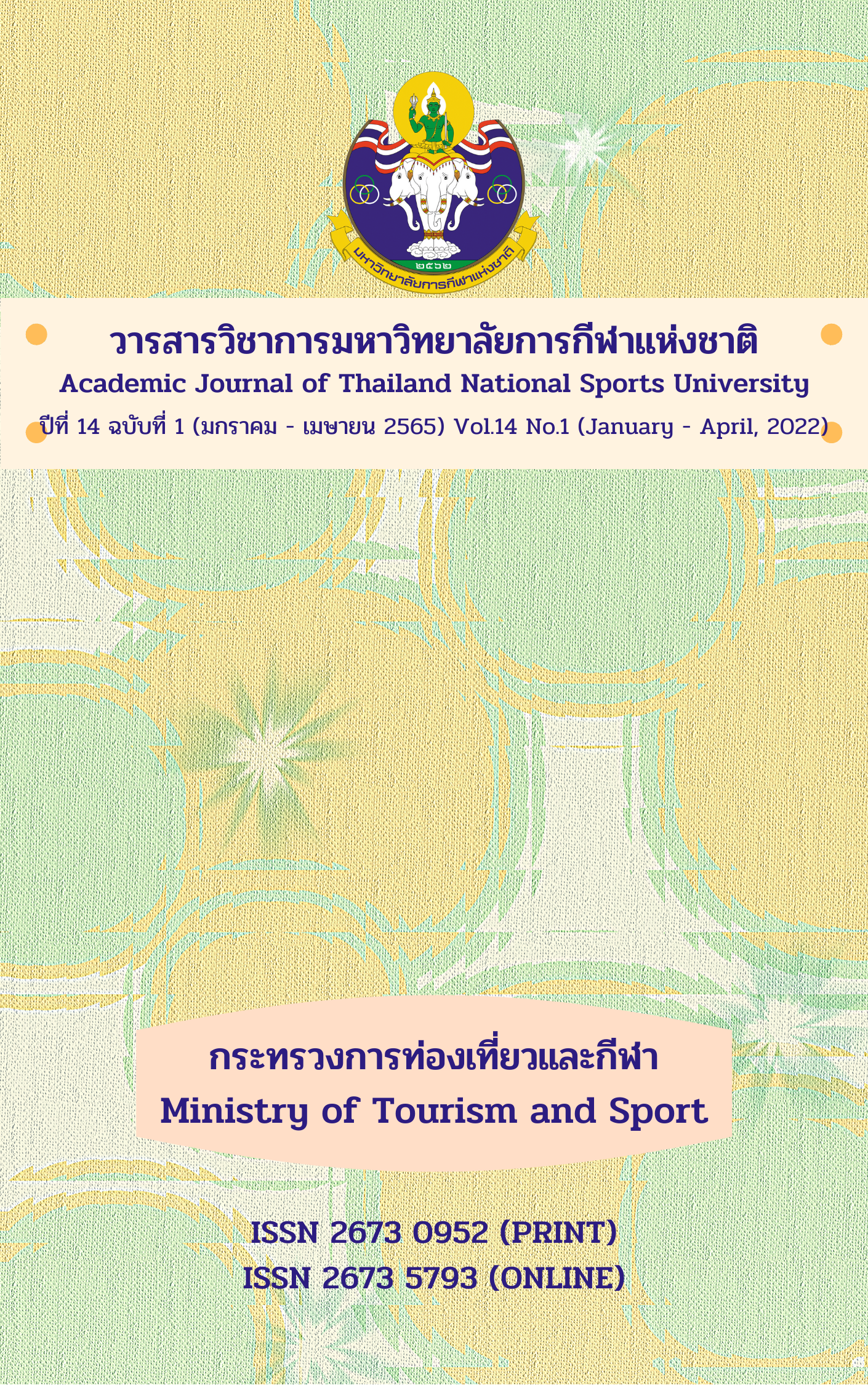GUIDELINES FOR THE DEVELOPMENT OF CULTURAL TOURISM, UTHAITHANI PROVINCE
Main Article Content
Abstract
Abstract
The purpose of this research is 1.To study cultural tourism destinations Uthai Thani Province. 2. To study the problems and obstacles of cultural tourism. Uthai Thani Province. 3. To find ways to develop cultural tourism. Uthai Thani Province. This research is a qualitative research. By using a specific interviewing method, a sample of 17 people included government, private and community officials.
The results of the study revealed that 1. Cultural tourism destinations Uthai Thani Province There are important tourist attractions such as Sangkas Rattanakiri Temple. (Wat Khao Sakae Krang), Wat Chantharam (Wat Tha Sung), Wat Uposatharam (Wat Bot), the way of life of the raft Sakae Krang River Basin, Ko Thepho Natural Tourist Attraction, Rong Ya Walking Street, Tham Khao Wong Temple, Karen Kaen, Kaffir Lime Village Remain unique Reflecting the lifestyle of the local people This is able to maintain the original as well. 2. Problems and obstacles of cultural tourism Uthai Thani Province Caused by the slowly growing economy Due to low income in the community Is a secondary city tourist attraction Not receiving support from relevant agencies helping to create points of interest No continuous and serious public relations Lack of support from relevant agencies, both public and private Providing the correct knowledge in using technology Most areas are lowland areas. Near the main water line Causing risks to natural disasters The new generation does not inherit local culture. 3. Approaches to Cultural tourism Development Uthai Thani Province Developed into a city that maintains local heritage Promote a festival that is famous for its unique attractions in the province to create points of interest Help create an existing culture that is unique and desired by tourists. Increase public relations channels to be easily accessible by collaborating with the government. Private and local people Promote OTOP products to be the main products for complete and sustainable cultural tourism.
Keywords: Development approach, Cultural tourism, Uthaithani Province
Article Details

This work is licensed under a Creative Commons Attribution-NonCommercial-NoDerivatives 4.0 International License.
The published article is a copyright of the Academic Journal of Thailand National Sports University. The passage appeared in each article in this academic journal is a perspective of each author which is not related to the journal. Each author is required to be responsible for all components of his/her own article. If there are any mistakes, each author must be responsible for those mistakes on his/her own.
References
Anon Sidapheng. (2016). Golf tourism management: Model by applying social exchange theory. Chonburi: Burapha University.
Boonlert Jittangwattana. (2005). Cultural tourism. Bangkok: Press and Design Co., Ltd.
Chanwit Kasetsiri. (1997). Cultural tourism. Retrieved from https://www.trf.or.th/
Development Plan of Uthai Thani Province. (2018). Uthai Thani Province Development Plan, 2018 - 2021. Retrieved from http://www.uthaithani.go.th/
Kanchana Sanglimsuwan, & Saranya Saenglimsuwan. (2012). Sustainable cultural heritage tourism. Journal of Management, 32(4), 139 - 146.
Kikeri S., Nellis J., & Shirley M. (1992). Privatization: The lessons of experience. The World Bank Publications.
Kotchasorn Chirapiromkon. (2016). Marketing factors having influencing on the decision – making to choose eco – tourism of tourists: A case study of Mae Kampong Village, Mae on District, Chiang Mai Province (Master’s thesis), Mae Jo University.
McMillan, J. H., & Schumacher, S. S. (1997). Research in education: A conceptual introduction. New York: Longman.
Ministry of Tourism and Sports. (2018). Amazing Thailand Tourism Year 2018. Retrieved from https://www.mots.go.th/
Ministry of Tourism and Sports. (2019). Action Plan to Drive Sustainable and Creative Community Based Tourism 2018 - 2022 and 303 Community Selection Criteria. Retrieved from https://www.mots.go.th/
National Office of Buddhism. (2018). Uthai Thani Province. Retrieved from http://www.onab.go.th/
Office of the National Economic and Social Development Board. (2015). National Economic and Social Development Plan No.12. Retrieved from https://www.nesdc.go.th/
Orawan Kerdchan. (2014). The Participation of Local Community in Eco – tourism management at Klongkon mangrove forest in Samut Songkhram Province (Master’s thesis), Dhurakij Pundit University.
Suchitrapa Punwilai, & Teerathep Chonmaitree. (2007). Potential and needs to plan and manage Community tourism in Chiang Rai Province. Chiang Rai: Mae Fah Luang University.
Thitapa Bamrungsilp. (2016). Creative tourism model for conserving ethnic culture in Sisaket Province. Chiang Rai: University of Phayao.
Tourism Authority of Thailand. (2002). Study project for the Krabi, Trang, Satun and Phatthalung tourism development action plan. Bangkok: National Institute of Scientific and Technological Research.
Tourism Authority of Thailand. (2018). Elements of tourism. Retrieved from https://www.tat.or.th/th
Uthai Thani Provincial Cultural Office. (2018a). Cultural tourism Uthai Thani Province. Retrieved from https://www.m-culture.go.th/
Uthai Thani Provincial Cultural Office. (2018b). Festival Uthai Thani Province. Retrieved from https://www.m-culture.go.th/
The World Trade Organization (WTO). (2004). World trade report. Important principles and concepts of sustainable tourism.


